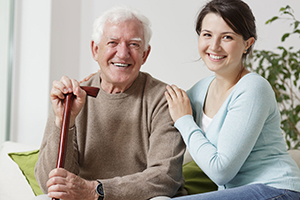Could Carer Technology Help Battle Elderly Loneliness?
The government recently announced that it would be launching the first ever loneliness strategy, aiming to empower all GPs in England to be able to refer patients suffering from loneliness to community activities and voluntary services by 2023, but how can impacts be made in the meantime? Loneliness can affect any individual of any age, but with 3.6million of the elderly living by themselves and 1.9million saying they often feel alone or invisible, it’s particularly an issue for those in later life. People can become socially isolated for many reasons but those with mobility issues or other health conditions are often unable to engage with many activities outside of their home, and with families now regularly separated by great distances, any social time with others is highly valued.
Carers can play a key part in reducing feelings of loneliness, but only if they are given the right tools to tackle the problem. The implementation of technology can help carers to give better care and increase the face-to-face time with their client. The amount of paperwork required to record any visits means that currently carers can spend the majority of their time filling out forms, but if this process was digitally transformed, less time would be spent on admin and more on the client. If carers used an app that combined a simple user interface with vo ice recognition, then this admin burden would be reduced and the information more detailed as it would be easier for carers to record more personal patient information such as a mood or extra activities. This more in-depth report can then be shared with the families of the individual to help alleviate any worries over whether their loved one has been visited and cared for while also letting them know what that individual has been doing. This means that when they pick up the phone or come to visit, family members will already have things to talk about and feel more connected to one another, helping individuals to feel less isolated and alone. As well as allowing the regular carer to spend more time with the client, this system also allows other carers to access the information and provide more personalised care experiences, should they happen to be assigned to that individual for the day.
ice recognition, then this admin burden would be reduced and the information more detailed as it would be easier for carers to record more personal patient information such as a mood or extra activities. This more in-depth report can then be shared with the families of the individual to help alleviate any worries over whether their loved one has been visited and cared for while also letting them know what that individual has been doing. This means that when they pick up the phone or come to visit, family members will already have things to talk about and feel more connected to one another, helping individuals to feel less isolated and alone. As well as allowing the regular carer to spend more time with the client, this system also allows other carers to access the information and provide more personalised care experiences, should they happen to be assigned to that individual for the day.
Introducing a non-intrusive system of IoT based sensors alongside the app can also help to provide a better care experience. Sensors can make the delivery of 24/7 care possible by tracking habitual behaviour and spotting changes in real time. This technology then facilitates carers to confidently monitor how well their client is doing at home, and organise their visits more effectively. As a result of this carers can ask more well-informed lifestyle questions and identify any problems faster.

